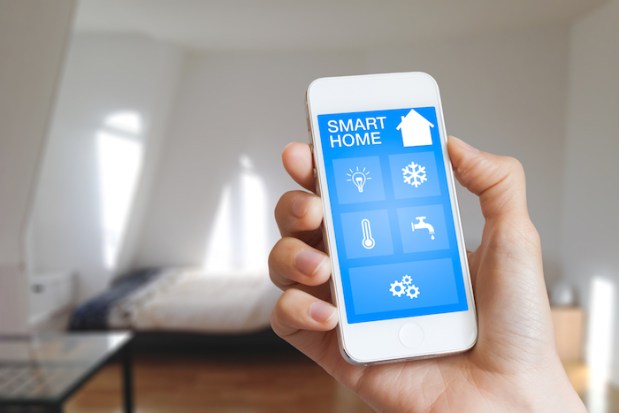Intel Knows A House Full Of IoT Doesn’t Make A Smart Home

Despite the ever-increasing number of connected thermostats, Wi-Fi lightbulbs and Internet-ready refrigerators that are making their way into consumers’ houses, webbing all of these gadgets together into a truly cohesive smart home has proven a much more elusive goal. It’s not that a truly connected smart home is unachievable – according to Intel, all the technology the Internet of Things could ever need is already in place.
That’s the optimistic view of Martin Despain, Intel’s director of smart homes and building solutions. Despain joined Karen Webster for a discussion about where Intel sees the IoT and smart home market as it stands today, as well as what Intel and others are doing to try to evolve both technology and policy in a, well, smart, direction.
KW: In broad terms, what is a smart home? And from a payments perspective, what elements of the smart home are adopting IoT to allow for a more seamless transaction experience?
MD: As we look at the smart home today, we’ve actually taken a position that it doesn’t exist quite yet. We think there are connected homes and there are smart devices, and to have a smart home, we have to up the game a little bit. A smart home is aware of who you are, what you’re doing, the purpose of what you’re doing and is also able to assist you in what you’re doing. The technology is there, but we still have to grow some ecosystems to get to the point where we’re delivering a holistic experience to the end consumer instead of single-point products.
KW: What is the difference between smart devices and a truly connected home? What factors must be in play for these smart devices to come together to support a smart home going forward?
MD: There’s a lot of confusion about how to get devices to be interoperable, to be seamlessly discovered by the home and interoperate with each other. The first part that we’re focusing on at Intel is the interoperability, connectivity and security of the smart home, and it needs to be driven by a standards-based solution. Our emphasis is on the OCF (Open Connectivity Forum) and their open platform called IoTivity. While that’s not the end all be all to solve this problem, it’s a really good start, and if our more than 200 partners in this consortium can keep pushing, we think we can drive the industry to an open standard solution and get rid of a lot of the proprietary protocols currently being used.
KW: The computer is obviously a connected device that can be considered a “hub” of sorts, but recently we have seen other devices take on that role, such as the refrigerator, Amazon Echo and Nest. How do these different “hubs” all mesh with each other to provide a truly connected home? What makes these devices ideal to become a hub in the home? What other devices do you see as potential hubs in the smart home?
MD: Intel is working on a platform – the Smart Home Developer Acceleration platform – that takes those standards and allows it to be on lots of different devices. When you say “universal hub,” to me, there’s actually going to be lots of different types of hubs that can do similar functions, and the end consumer will have to choose what’s important. You mentioned the smart refrigerator – well, with the right platform in the fridge and the right amount of connectivity that very well could be a universal hub that talks to other devices. It could be a PC. It could be a router you have in your home already.
Now, there have to be some changes to hardware, we need to modify some of the memory footprints and things like that, but we don’t have to go out and create this brand new solution. We just need to modify some of the solutions we have in place today.
KW: With multiple connected devices relaying endless amounts of data, what role does IoT play in keeping that data secure, especially from a payments perspective?
MD: At Intel, we tend to look at it as layers after layers of security. If you look at the Smart Home Developer Acceleration platform, we start at the silicon level and have added security engines and things like that. Then you move up to the OS level and it has its own trusted boot capabilities to ensure that it hasn’t been hacked or anything like that. Then you move into the middleware and you have to start adding things like the manifest system that recognizes that only applications that have a trusted manifest are allowed to access the gateway. Then you have to add security to devices that are attached or connected to the hub, even if they don’t have their own security per se. If they start acting in a manner you don’t expect, you can shut those ports down. And then you move into the actual data plane, where you have to make sure you’re doing the right encryption, using the right protocols to send data from the device into the cloud.
It’s just layer after layer, and it takes thought. The technology is there. It’s important to design with security in mind from the beginning. You can’t just slap security on the end of the design. Everything is hackable, but you can make it much more difficult to hack.
